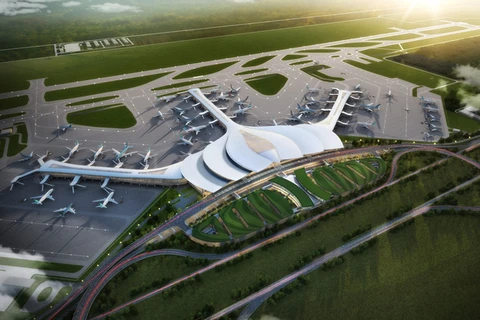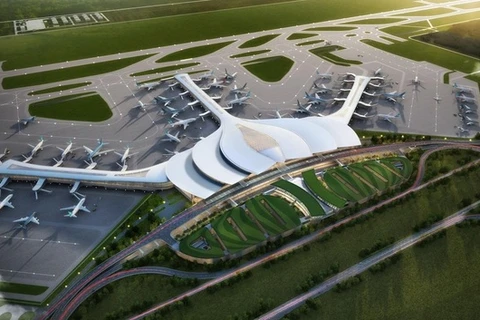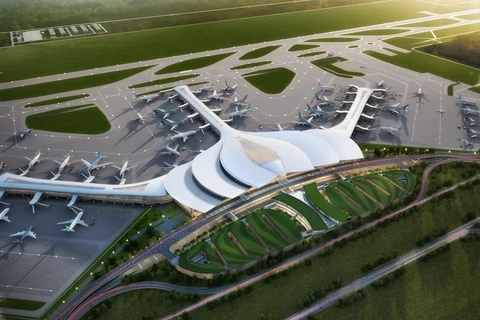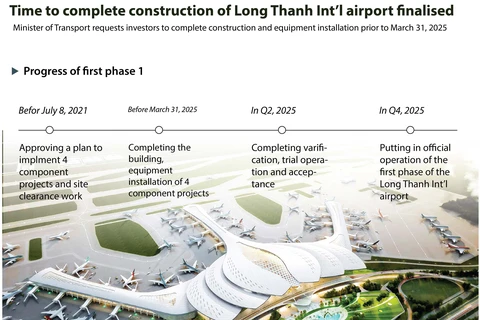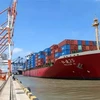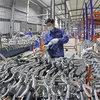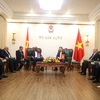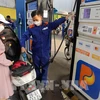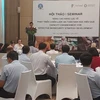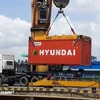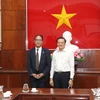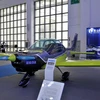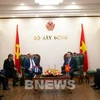Hanoi (VNA) – Deputy Prime Minister Le Van Thanh has requested Long Thanh International Airport project to be accelerated so that its first phase could be completed in January 2025.
The airport is a national key project. Once operational, the airport in southern Dong Nai province will help ease the traffic burden on nearby Ho Chi Minh City and serve as an impulse for economic development in the southern region and the country as a whole, according to the Government Office’s announcement of Deputy PM Thanh’s conclusion at a recent meeting.
It noted ministries, sectors, the Dong Nai People’s Committee, the Airports Corporation of Vietnam, the Vietnam Air Traffic Management Corporation, consulting firms, and contractors have strived to address difficulties to speed up site clearance and sub-projects. However, land recovery, compensation, and resettlement are lagging behind schedule while the National Assembly demanded those activities to be completed by December 31 this year.
To ensure the first phase’s progress, quality, and effectiveness, the Deputy PM asked the Secretary of the Party Committee and the Chairperson of the People’s Committee of Dong Nai province to order relevant agencies to coordinate closely with each other in site clearance to ensure that the entire 4,946ha of land for the project will be completely recovered by June 30, 2022.
He also told investors of sub-projects to accelerate airport design and construction so that the first phase could be completed in January 2025.
The Long Thanh International Airport is set to have four runways, four passenger terminals, and other auxiliary facilities to serve 100 million passengers and 5 million tonnes of cargo a year by 2040.
In the first phase, it will have one runway, one passenger terminal, and accompanying facilities, able to handle 25 million passengers and 1.2 million tonnes of cargo per year./.
The airport is a national key project. Once operational, the airport in southern Dong Nai province will help ease the traffic burden on nearby Ho Chi Minh City and serve as an impulse for economic development in the southern region and the country as a whole, according to the Government Office’s announcement of Deputy PM Thanh’s conclusion at a recent meeting.
It noted ministries, sectors, the Dong Nai People’s Committee, the Airports Corporation of Vietnam, the Vietnam Air Traffic Management Corporation, consulting firms, and contractors have strived to address difficulties to speed up site clearance and sub-projects. However, land recovery, compensation, and resettlement are lagging behind schedule while the National Assembly demanded those activities to be completed by December 31 this year.
To ensure the first phase’s progress, quality, and effectiveness, the Deputy PM asked the Secretary of the Party Committee and the Chairperson of the People’s Committee of Dong Nai province to order relevant agencies to coordinate closely with each other in site clearance to ensure that the entire 4,946ha of land for the project will be completely recovered by June 30, 2022.
He also told investors of sub-projects to accelerate airport design and construction so that the first phase could be completed in January 2025.
The Long Thanh International Airport is set to have four runways, four passenger terminals, and other auxiliary facilities to serve 100 million passengers and 5 million tonnes of cargo a year by 2040.
In the first phase, it will have one runway, one passenger terminal, and accompanying facilities, able to handle 25 million passengers and 1.2 million tonnes of cargo per year./.
VNA

